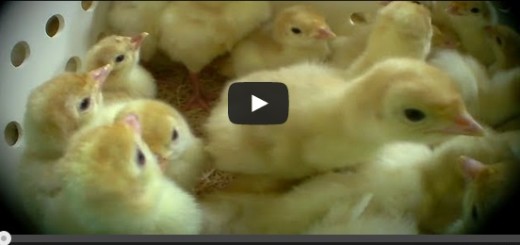Counting the Costs
In perhaps the first formal study of its kind, a report entitled Dead or Alive? Comparing Costs and Benefits of Lethal and Non-Lethal Human Wildlife Conflict Mitigation on Livestock Farms, has revealed, somewhat surprisingly, that lethal methods to combat livestock losses to predators are not only less practical but financially more costly than non-lethal methods. This radically counters the widely accepted perception that lethal predator management such as the use of traps, poisons and bullets is cheaper and easier to implement and maintain than non-lethal methods such as the use of guardian animals and protective collars.
Livestock loss through natural predation is the principal cause of human-wildlife conflict throughout the world but is particularly prevalent in South Africa. In a survey in 2010 the estimated the cost of livestock loss to predation was USD 171 million. The predominant land-use in South Africa remains rangeland agriculture as it has for centuries. The sector has, however during the past 50 years, moved towards more extensive and commercial systems. Economies of scale and political and legal imperatives have forced farmers to reduce labour costs and risks, and to acquire increasingly extensive rangelands without using time-honoured preventative methods such as human shepherding. This has resulted in a steady increase of losses to local farmers’ herds, which have provoked widespread retaliatory and preventative killing of predators.
In South Africa farmers have primarily employed lethal methods such as gin-traps, gun-traps, poison and hunting to eradicate problem carnivores. This has been done on advice, and sometimes the assistance of government. Permits and blanket culls to eradicate predators are encouraged and, as in the case of the Western Cape province, subsidised.
The problems with lethal predator control
Yet despite these methods not only has lethal management negatively impacted on predator populations, and the ecosystem at large, it has been found in a separate study in 2008, that losses to livestock have, if anything, increased.
The reasons for the failure of lethal control to achieve results are varied. Lethal methods are unselective, indiscriminate and often kill non-target species and, as in the case of South Africa, can also destroy severely threatened species like the Cape Vulture whose populations have been especially susceptible to poisons. Many predators have learnt to avoid control efforts but even if the intended culprit is removed, as is common among jackals, there usually is an influx of subordinates that fill and vie for the territorial vacuum thus increasing the number of predators and ergo livestock losses. This has resulted in a parallel increase in a farmer’s commitment and expense.
The economic advantages of non-lethal control
The study found that non-lethal methods, especially the use of guardian animals, is far more advantageous than lethal control in that it preserves the lives of predators, is more effective in protecting livestock but, most importantly for the farmer, is less costly and requires far less commitment. In Namibia for example, 73% of farmers using guardian dogs like Anatolian Shepherds reported a decrease in livestock fatalities. Dogs are not the only effective guardian animals. Donkeys, alpacas and llamas behave aggressively toward predators and are effective in chasing off smaller carnivores. Alpacas in particular have been used with great effect. James Brodie of Southern Cross Alpacas says that the 5-foot tall camelids are far easier to manage than guardian dogs and unlike pellet eating canines require almost zero special care as they bond, eat and move continuously with the herd. Castrated males are used as they instinctively and vigorously protect their adopted herd by kicking, spitting and trampling anything from small predators to humans. Brodie maintains that the once-off cost of buying a young male will be recuperated within the first two lambing seasons. Thereafter, a farmer may rest easy knowing he or she has a guardian alpaca for up to 15 or 20 years.
During the 3-year study, 11 livestock farms in South Africa’s Eastern Cape province were examined using both lethal and non-lethal conflict mitigation methods. For the first year the farmers used existing lethal controls then switched to guardian animals or protective neck collars for the following 2 years. During the first year the cost of lethal protection averaged at USD 3.30 per head and the loss of stock to predator depredation was USD 20.11 per head.
In the first year of non-lethal control the running costs, which included the cost of implementation, were similar to the lethal costs at USD 3.08 per head but the cost of predator loss was almost 70% less at USD 6.52 per head. In the second year of non-lethal control the running costs were down to USD 0.43 per head and depredation costs dropped further to USD 5.49 per head suggesting that non-lethal methods are financially far more advantageous.
One of the report’s analysts has pointed out that “Lethal predator control is an expensive management practice, with farmers employing permanent trappers, hiring problem animal hunters, and using a range of other lethal control methods with associated management costs (hunting dogs, helicopter culls, poisons, various traps etc.)” while non-lethal control not only preserves the ecology, but is significantly cheaper with less commitment by the farmer.
Social and Cultural Over-riders
In the follow up surveys conducted 13 and 30 months after the study it was found that many of the farms had perplexingly resorted back to lethal or at least a combined program of lethal and non-lethal management control. This is an indication that the human-wildlife conflict is not necessarily economic. There are social and cultural aspects to this age-old conflict. Prestige and enjoyment are powerful over-riders to financial ones.
It is clear therefore that the human-wildlife conflict is not just about economics, even in view of the fact that non-lethal methods far outweigh lethal methods both in cost and commitment. Yet, the latest findings may still go a long way to revolutionising how livestock farmers deal with the anachronism of lethal predator control. Although not ideal in terms of the complete preservation of carnivores, a combined policy at least affords partial protection of the ecology as well as money in the bank for livestock farmers.




